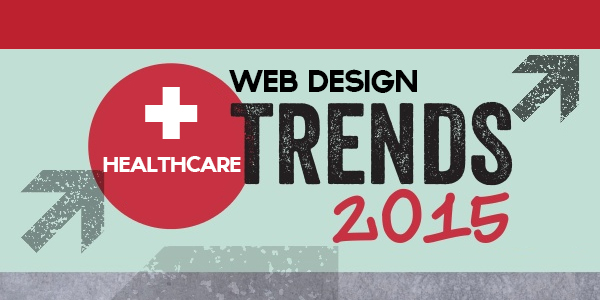Gone are the days when the healthcare field hardly cared about having a presence on the web. Now, with 75% of people choosing to browse the internet to research healthcare practices and reading reviews, it is now an unavoidable essential.
If you’re in healthcare and you’re planning on a website design or a complete redesign, here are trends in healthcare web design that you need to know about. While some of these are “design fads,” many are here to stay. Share them with your web designer and make sure you try them out.
Websites are getting Responsive
Get out of the desktop and think about smartphones and tablets. They are now the first access point for information. This doesn’t mean to give up on desktop PC website design. Rather, optimize your website across devices for different screen sizes and resolutions. It may seem challenging due to the fact that many items (read specialties) are to be listed while also having to make them easily navigational. But with a right team and creativity, this is definitely achievable. Remember, your website creates the first impression of your professional image.
Websites are going flat
Flat design has garnered an impressive adoption across industries due to its simplicity and straight messaging. A flat design is a fantastic way to add a professional feel to your site. Unfold your story and your mission with a modern minimalistic approach that uses crisp typography and large images that makes them instantly appealing. Utilize white spaces effectively, while also de-cluttering information. Flat design is best to create an optimal user experience.
Sites are easily navigable and searchable
Not only should your site be beautiful, but it should be searchable. The navigation bar and the search function are two excellent tools that can be utilized to make your site user friendly. Prospective patients looking for information may not at all times be sure of what they are looking for. In such cases, it makes sense to have a user friendly navigational experience. Browsing your site is hindered when the user has to scroll up all the way to the top of the page to reach for the navigation bar. This seems too much of a work while one has to browse through an entire site. This is where you could have a navigation bar that follows along with the scroll.
It may also be the case where some may not be interested to scroll through all the pages and are aware of the search term. This is where the search function comes handy. Allowing the users to simply type and find the term-related results cuts time and ensures better attention span.
Instilling an ‘advanced search’ function wherein the basic search function is enhanced with auto-fill and categorical searching is also a great idea.
They’re including Micro-sites and Landing Pages
Include micro sites and landing pages that are exclusively dedicated towards a campaign or a cause and so on. This ensures focus, greater attention, targeted messaging and calls to action.
Sites are full of Testimonials
Though you have impressively listed all your services and created a professional image of yourself, including testimonials gives authenticity. Whilst looking out for a particular specialty or physician, a first time patient may find the words of patients that have already experienced the service more assuring. People prefer hearing it straight from the horses’ mouth. No better way to boost reliability through your loyal patients. Go ahead and make use of this inexpensive tool.
The trends may keep changing; whatever the trends, make sure your designer is a HIPPA certified web designer to design a website that’s completely HIPAA complaint while also being appealing.
